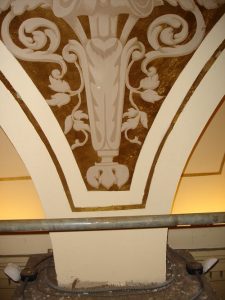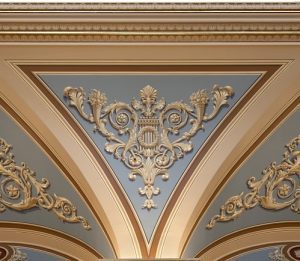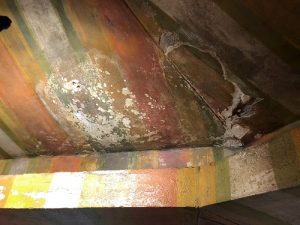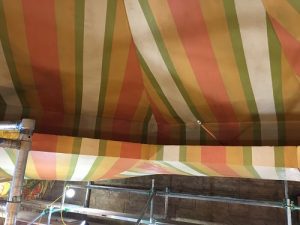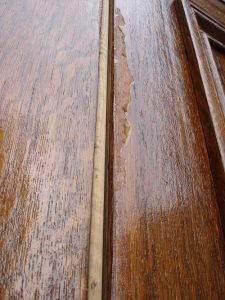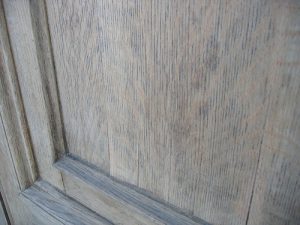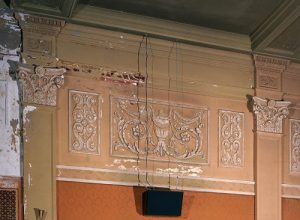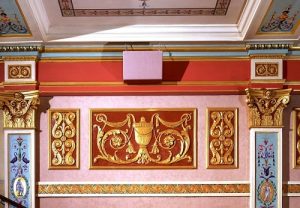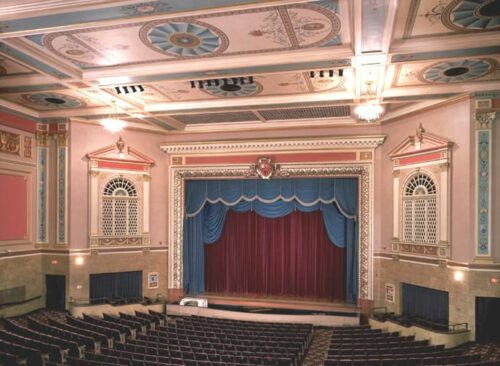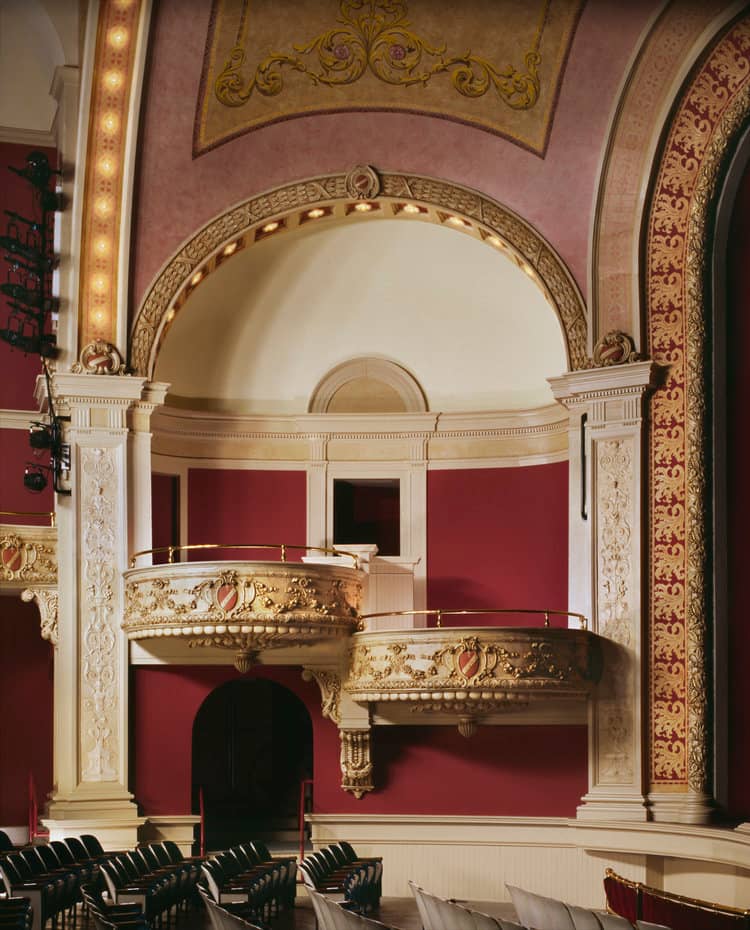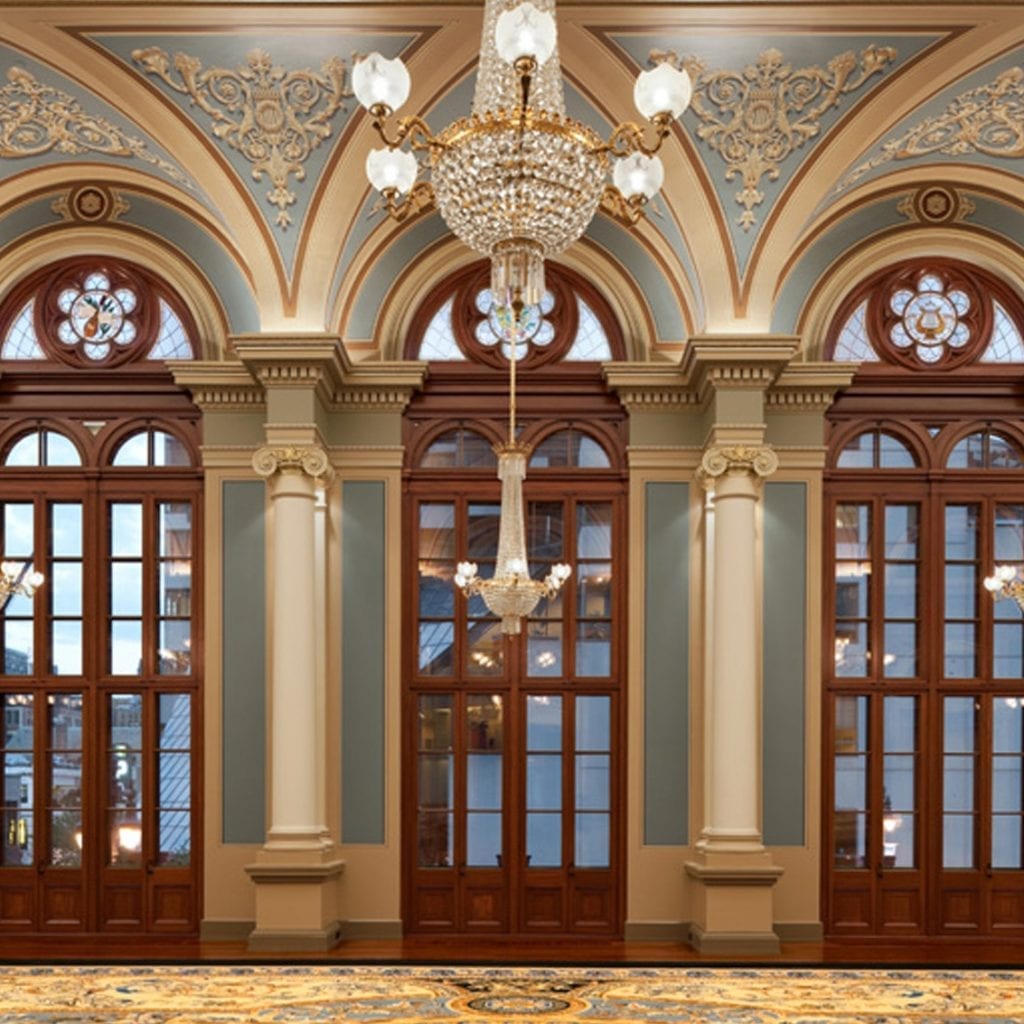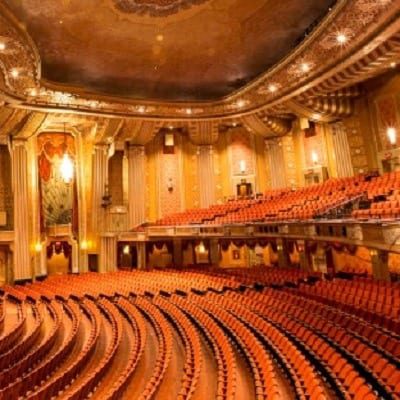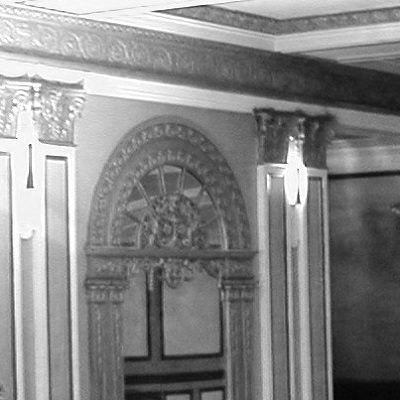Theatres have been valued and cherished for thousands of years and, despite the advanced technology used for entertainment today, people still love to go to the theatre to witness a live performance in a grand space. Proof of this is seen everywhere in organizations such as the League of Historic American Theatres dedicated to keeping historic theatres sustained and available. It is important to properly conserve and restore the decorative and architectural elements of historic theatres so that they may continue to bring people together and provide them with fantastical and dramatic entertainment.
A theatre is in need of restoration and/or repair either because it has changed from its original design scheme or because its architectural elements are failing and need attention. Accordingly, in determining whether your historic theatre is in need of restoration or repair, two things must be considered. First, an investigation of the theatre’s history will determine whether the theatre has strayed from its historic charm or, in other words, has shifted from its original style and design. Second, an analyzation of the theatre’s architectural elements will determine whether anything is in need of repair, restoration, or conservation.
Understanding the History of the Interior
Sometimes the original design scheme of a theatre will be changed, altered, or painted over. When this is the case, a historic building assessment of the theatre will help determine the original style and design of the building in order to take the necessary steps to re-vert the building back to the architect’s original intent.
Understanding the history of the interior can involve a historic paint investigation which consists of archival research–finding old news articles, magazines, photographs, original specifications, or anything that will help relate the history of the building. The investigation and assessment should also include scientific laboratory analysis, on-site investigation, exposures and sampling. Often owners can be unaware that some decorative elements even exist in their structure or what the original color scheme was until a historic paint and finishes investigation takes place. All this information can help restore the theatre back to its original beauty and glory. So, if you have noticed areas of your theatre that look overpainted or have seen old pictures of your theatre that shows decoration you don’t currently see or show more detailed decoration, you may want to have a historic paint investigation performed.
Original design scheme- before and after restoration.
Architectural Elements
The main sign that your historic theatre is in need of restoration is when its architectural elements are clearly damaged, missing, worn, dirty, or faded. Common features that wear and tear over time include plaster, woodwork, decorative painting elements (stenciling, Trompe L’oeil, woodgraining, glazing, marbleizing, etc.), artwork, and gilding. A conditions assessment of each individual element may be conducted to determine its current state and corresponding needs. If the element is damaged it may be in need of repair or consolidation, if it is worn and tired it might need to be restored, and if it is in good shape, it may be conserved in order to provide sustainability and prevent deterioration. This process should be done for each element to determine if the building as a whole should be restored or just some of the individual elements. Oftentimes one can easily see at least some of the problematic conditions but the full extent of the potential issues cannot be known until the material is properly examined.
The following are examples of common features in theatres and signs they are in need of attention.
Plaster
Decorative plaster moldings, cornices, friezes, medallions and other elements may be chipped, crumbling, or have missing portions, all of which take away from the stunning effect they add to the theatre. These elements may require replication, running molds, and fabrication to restore them. Cracking, swelling, and warping on walls and ceilings could be a sign of failing plaster.
Besides what you see, there may also be invisible issues in the underlying structure upon which it sits. Executing a plaster conditions survey will help determine the original installation/assembly, quality and condition of the plaster and what needs to be done. Understanding the cause of the original failure is key to address the issues and prevent future failure. Deteriorating decorative plaster elements might not be as dangerous as a cracked ceiling. Small cracks on the ceiling may be caused by a failing substructure invisible to the eye which could result in collapse or falling sections if the issues are not addressed. Providing plaster with the attention necessary is not only good for the aesthetic and sustainability of the theatre, but also for the safety of those using it.
Damaged plaster -before and after restoration.
Woodwork
Wood is an organic material that is susceptible to a variety of damage. Water damage is a common issue when it comes to woodworking. Over time, water and moisture can cause tremendous warping, swelling, and mold. Wood can also acquire scratches, cracks, and gauges from the wear and tear of everyday life. Termites can eat away at the wood and UV exposure can fade its color and shine. Atmospheric grime settles and embeds onto the surfaces. A conditions assessment and examination of the woodwork will help determine the issues as well as gather the valuable information needed to determine the best path forward. Details such as the species of wood, age, and original and current finish types all guide in determining whether conservation, repair or restoration is required. Depending on the issues discovered, the wood may require gentle cleaning, applications of coatings/finishes, or replication to restore or repair the wooden elements.
Delamination of varnish (left) and detail of wood veneer door failing/lifting (right).
Decorative Painting and Artwork
Obvious signs of failing paint in decorative finishes or artwork, prior to any conditions assessment, consist of flaking, peeling, uneven paint, fading, delamination and tearing of canvas, accumulation of soot and debris or missing paint in some areas. The conditions assessment and investigations will help provide an understanding of how the decorative painting or artwork was originally executed and determine the underlying causes (i.e., age, water damage, thermal shock, UV exposure, improper maintenance) which must be addressed in order to determine what portions of artwork/finishes should be conserved, restored or possibly recreated.
Where possible, original paint that has flaked, chipped, or peeled away may be stabilized and reattached. Harmless cleaning solutions can be developed and applied to the paint and finishes, to remove incompatible varnishes and overpaint, years of accumulated filth, and to help restore colors to their original brilliance. The assessment will also determine whether the integrity of the underlying structure has been undermined and whether that is something that needs to be addressed. Something that can also be established during these assessments is a protection plan for any artwork which would be especially important to protect against ongoing construction projects.
Wall decorative finishes before and after restoration.
Gilding
Signs of failing gilding are usually eminent to the naked eye and consist of losing luster and becoming dull or wearing off in some places, leaving behind an uneven pigment distribution. An assessment will help determine whether the cause of wear is due to the metal leaf reaching the end of its lifespan or another possible cause. Improper handling, use, and cleaning can cause the metal leaf to flake, peel, or become otherwise damaged. Changes to the underlying structure (for example, swelling plaster caused by water damage) can cause substantial damage as the metal leaf naturally shifts and adjusts itself to accommodate.
Once an assessment has been performed and the underlying structure has been evaluated for instabilities which may impact the gilded surface, actions can be taken to prevent future damage and reapplication of the metal leaf and glazing can take place.
Gilding before and after restoration.
Although these are the primary signs a theatre’s decorative and architectural elements need to be restored, there may be others according to the building’s specific needs. The best way to determine the scope of a specific theatre’s needs is to consult a professional. If you have any questions or a project you would like to discuss, please contact us.


